In Denmark, cargo bikes are not just a trend — they’re a lifestyle.
Families ride them to school, shops, and weekend picnics. You see ladcykler everywhere on Copenhagen streets.
Why Cargo Bikes Are So Popular in Denmark — and Why You Should Still Choose Carefully
Denmark has one of the highest cycling rates in the world. For many people, a cargo bike is more than transport — it’s part of daily life and culture.
The idea of green transportation and staying active fits perfectly with Danish values around health, sustainability, and community.
But high demand also means a lot of cheap or under-tested models have entered the market. Many of these lack strong frame kits, belt drives, or brake pads built for heavy loads. Others skip proper testing under European standards.
So, before you buy, take a moment to understand what makes a safe cargo bike — not just a stylish one.
The Safety Standards That Matter
EN 17860 — The New Benchmark for Cargo Bikes
EN 17860 is the newest EU standard specifically for cargo bikes — both pedal and electric (e-cargo bikes).
It replaces the old “one-size-fits-all” approach from EN 15194, adding stricter structural and braking tests that reflect the real load conditions of modern family ladcykler. Here’s what it means in practice:
| Test Category | What It Measures | Typical EN 17860 Requirement |
|---|---|---|
| Frame strength & fatigue | Ensures the frame can handle constant vibration and load stress. | Tested with up to 120 kg payload per loading area for 100,000 load cycles. |
| Braking performance | Measures how the braking system performs under full load and emergency stop. | Must stop from 25 km/h to 0 in ≤ 4.5 meters for two-wheelers and ≤ 5.5 meters for trikes. |
| Stability test | Checks that the bike won’t tip during turns or loading. | Simulated with lateral tilt angle ≥ 25° without loss of balance. |
| Steering & handling | Evaluates front linkage or cable-steer systems on long johns and trikes. | Required to withstand 10,000 steering cycles without deformation. |
| Battery & electrical safety | Tests for overheating, waterproofing (IP rating), and short-circuit resistance. | Must maintain IPX5 or higher, no more than 10°C deviation after thermal cycle. |
| Parking & stand test | Confirms that the parking stand supports full load safely. | Stand must hold at least 1.25× max load for 10 minutes without deformation. |
In simple terms, a cargo bike that meets EN 17860-2 (two-wheeled) or EN 17860-5 (three-wheeled) standards has passed rigorous lab and road simulation tests. It means the frame kit, brakes, and cargo box have been verified for the kind of daily use common in Denmark — children, groceries, rain, and even cobblestone roads.
By contrast, models that only claim compliance with EN 15194 meet general e-bike standards but not the extra structural safety cargo bikes require.
So, when comparing the best electric cargo bikes for your family, always ask the dealer:
👉 “Is this ladcykel tested under EN 17860?”
It’s the most reliable sign that your bike is truly ready for Danish roads.
EN 15194 — The E-Bike Regulation
EN 15194 is the classic rule for all electric bikes, but it doesn’t cover the unique weight and balance of cargo models. Still, it’s worth checking that your bike’s electrical system is CE certified and tested for European use.
Battery and Electronics
A safe electric cargo vehicle needs batteries that meet EN 50604-1 or equivalent standards.
Ask about battery capacity (Wh), waterproofing, and the pedal sensor system.
Here’s a simple way to understand it:
- 400–500Wh: Good for short city errands (10–25 km).
- 600–700Wh: Ideal for school drops and grocery runs (25–50 km).
- 800Wh+: Best for long commutes, hilly terrain, or heavier loads.
Also check how the system delivers power. Most high-quality cargo pedelecs today use a torque-sensing pedal sensor, which adjusts power naturally to your effort — smoother and more efficient than basic cadence sensors.
Good brands combine mid-drive motors (for balance and hill climbing) with reliable controllers, ensuring quiet, steady assistance even when fully loaded.
If you see terms like belt drive, hydraulic disc brake, or sealed controller box, that’s a sign the manufacturer paid attention to long-term reliability — something that matters when you use the bike daily for years, not months.
Braking, Steering, and Load
- Hydraulic disc brakes or brake pads made for heavy loads.
- Stable steering wheel geometry that feels controlled, not shaky.
- Reinforced cargo bike rack and cargo box that can carry 80–100 kg safely.
When people talk about types of cargo bikes, the two main designs are front loaders (also called bakfiets or box bikes) and longtails (rear loaders). If you’re unsure, check out this comparison:
👉 Cargo Bike vs Regular Bike in Europe
👉 Front Loaders vs. Longtails: Which Cargo E-Bike Fits Your Family Best?
Your Quick Safety Checklist
- Is the frame tested for heavy use (EN 17860)?
- Does the battery have European safety certification?
- Are the brakes hydraulic or mechanical disc brakes designed for heavy loads?
- Does it use a belt drive or high-quality chain system for lower maintenance?
- Is there a rain cover, seat cushion, and child harness system?
- Can it be stored safely in your garage or courtyard?
- Is there local service or warranty in Denmark or nearby EU countries?
- Are the lights, pedal sensor, and display tested under EU electrical safety standards?
Practical Tips for Everyday Riding
- Always park using the dual kickstand before loading kids or groceries.
- Keep the brake pads clean — cargo bikes wear faster under load.
- Lower tire pressure slightly for comfort, but not too low (risk of rim pinch).
- Remove the battery during winter storage to extend life.
- Check the steering wheel and front linkage regularly for looseness.
- Keep your belt drive or chain clean — Danish weather can be tough with rain and salt.
- Never exceed the stated load capacity of your cargo box.
Final Thoughts
In Denmark, choosing a cargo bike is about more than transport — it’s about how your family moves every day.
By focusing on safety standards like EN 17860, quality frame kits, reliable belt drives, and well-tested electric systems, you’ll get a best electric cargo bike that truly fits your lifestyle.
If you’re looking for a family-friendly electric cargo bike that truly meets all these safety and comfort standards — from EN 17860 compliance to a reliable mid-drive motor and long-lasting battery system — the Aitour Family C is worth a close look.

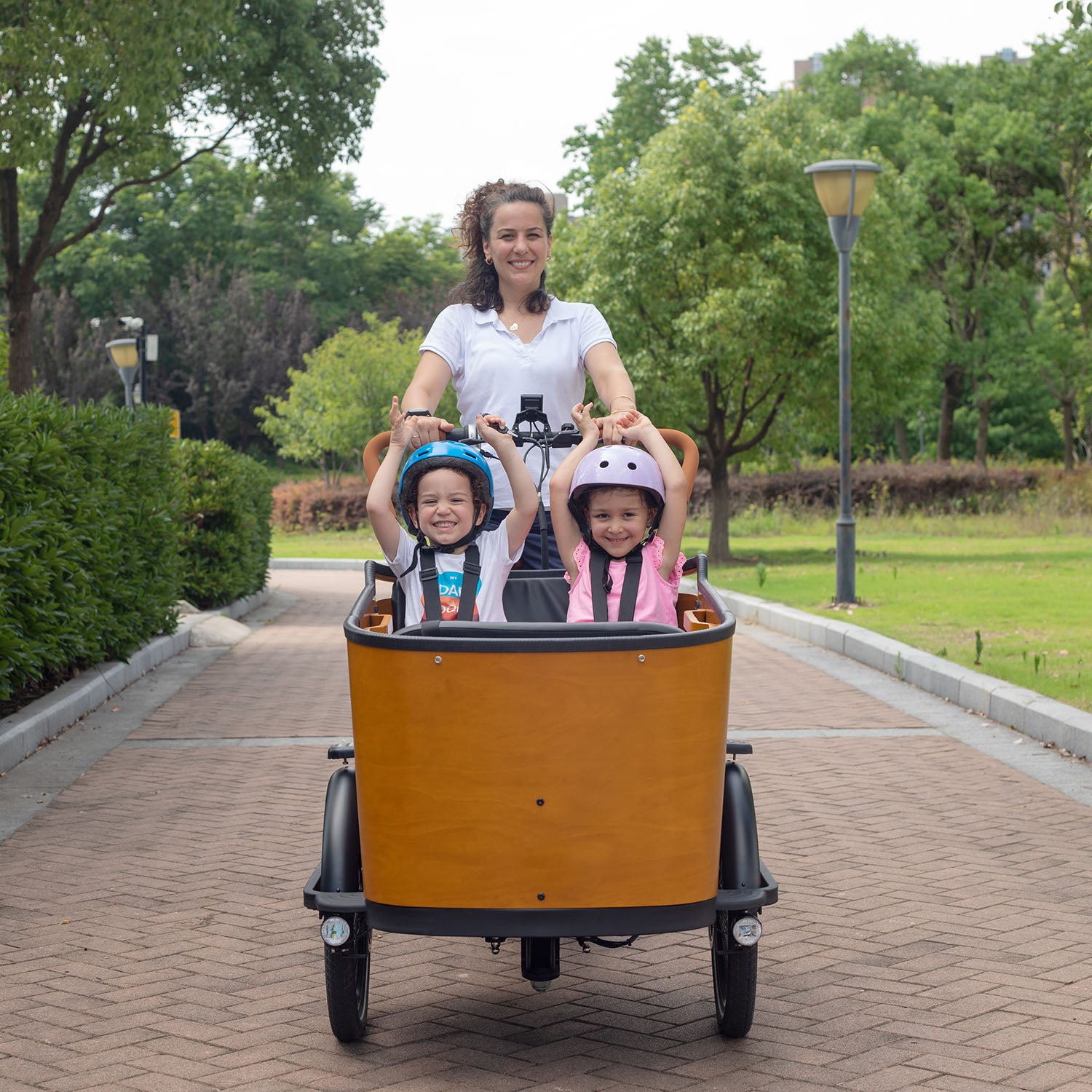

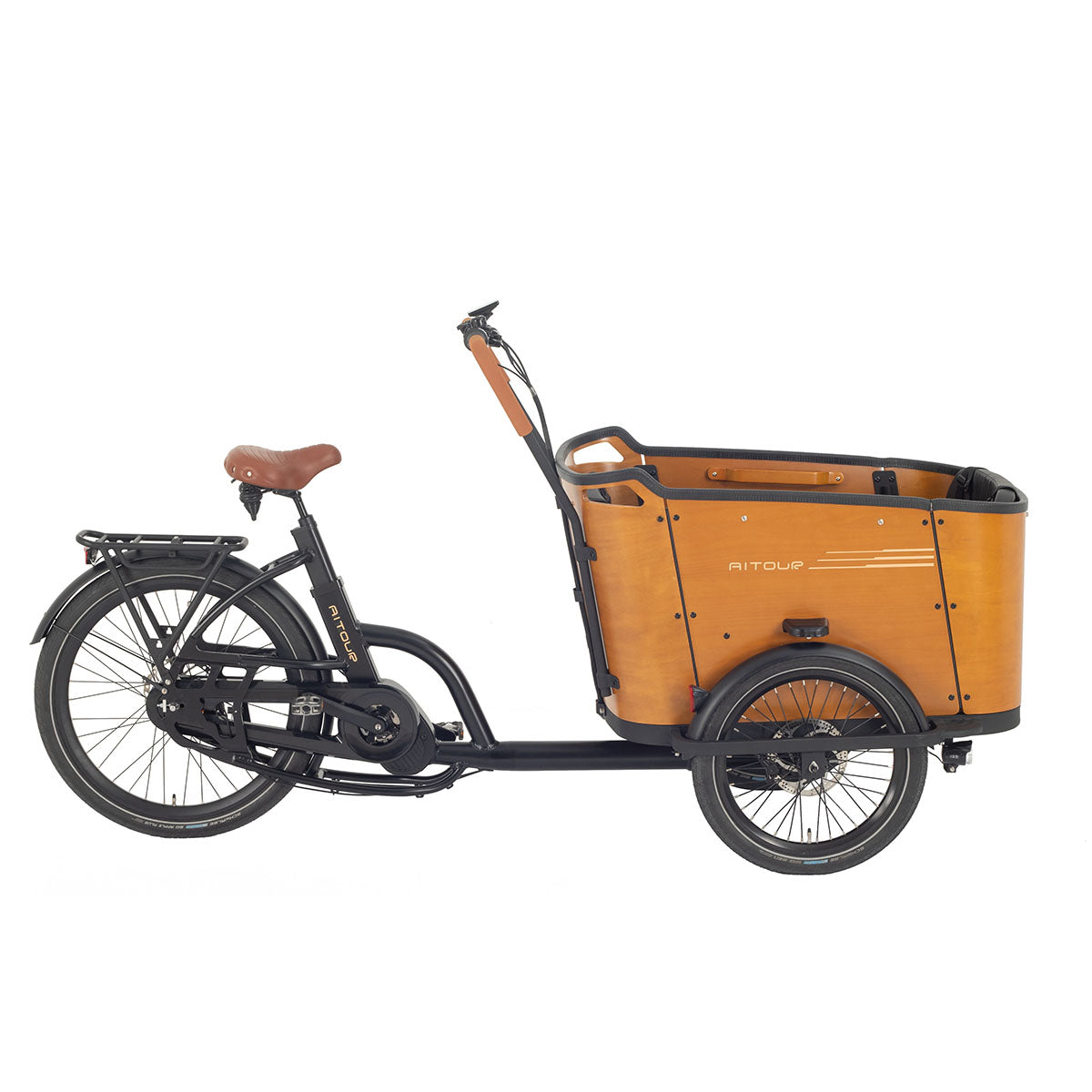
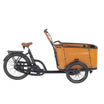
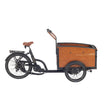
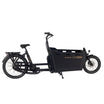
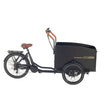
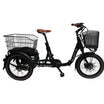
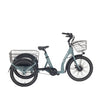
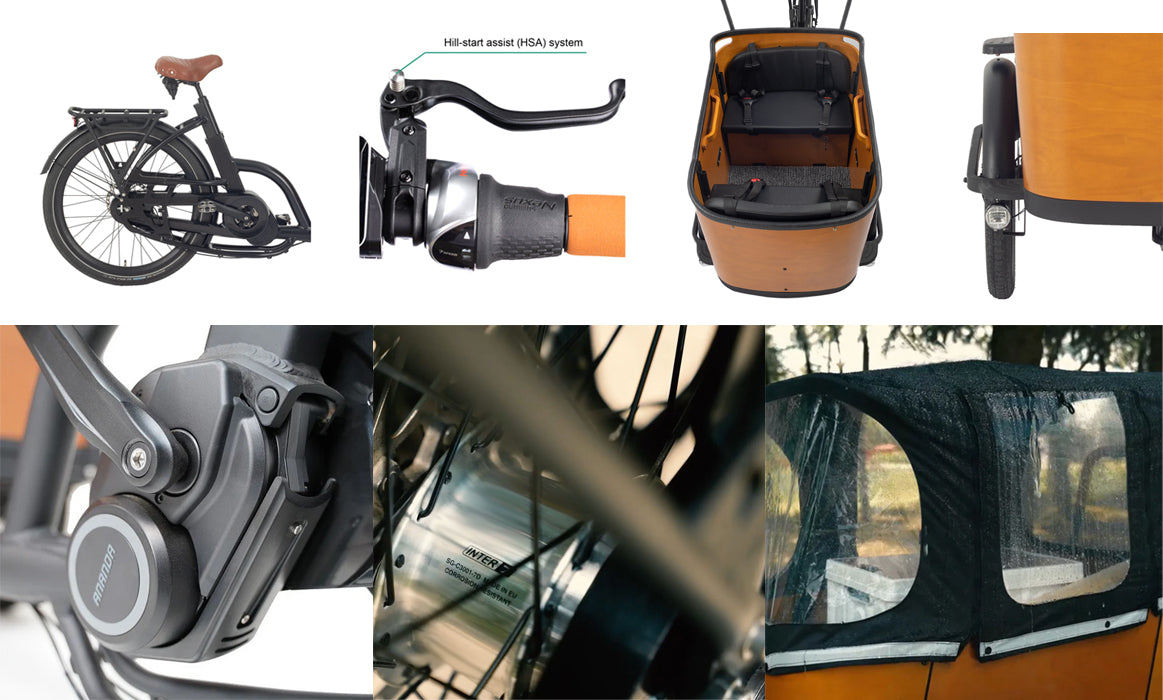



Leave a comment
All comments are moderated before being published.
This site is protected by hCaptcha and the hCaptcha Privacy Policy and Terms of Service apply.